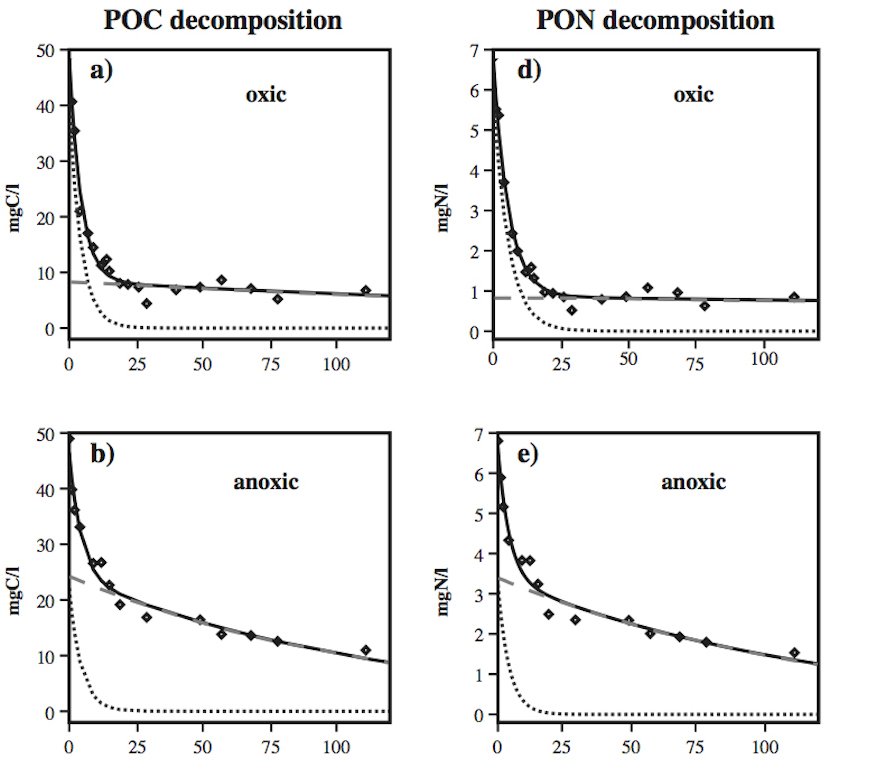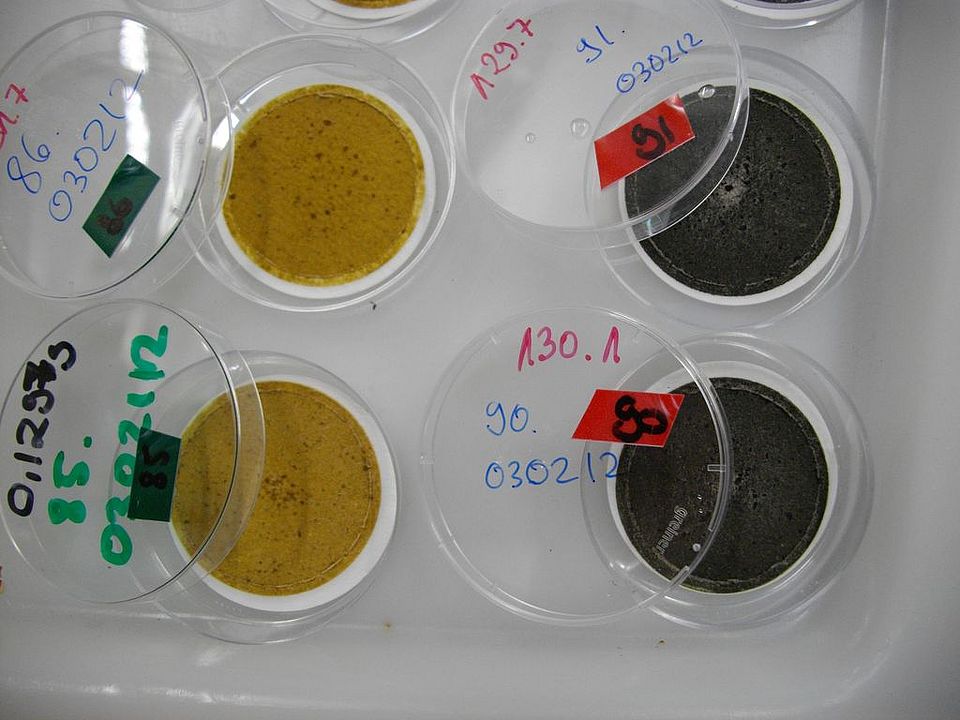Only a minor portion of organic particles produced within the euphotic zone of lakes or the ocean reaches the sea-/lakefloor, with the rest being remineralized within the water column. The fraction that is ultimately buried in the sediments depends on the water depth, i.e. the residence time in the water column, and redox conditions. Particulate organic matter (POM) is colonized by microorganisms that break down complex organic molecules into smaller soluble organic compounds, which are then remineralized to CO2 and nutrients. Microbial decomposition (and biosynthesis) can progressively modify the bulk composition of the organic matter because different OM fractions have a different susceptibility to microbial degradation.
Making use of laboratory experiments and field measurements, we investigate biogeochemical processes that control the degradation, preservation and bacterial reworking of organic matter within sediments. We are particularly interested in the impact of microbial degradation and re-synthesis on the elemental partitioning between the particulate and remineralised phases, and the organic matter compositional shifts that are induced by the early-diagenetic reactions. Organic matter preserved in marine and lacustrine sediments retains substantial information about paleoenvironmental conditions, both in the geologic past and during historic times. We seek to understand the compromising effects of early diagenesis on the applicability of biomarkers and isotope proxies in paleoceanographic/limnological studies in general, and the mechanisms behind N isotope signature alteration in particular. These aspects of our research are not only important for our general understanding of the controls on the OM breakdown processes themselves, they are also relevant for assessing the integrity of sedimentary archives as recorder paleoenvironmental information.


